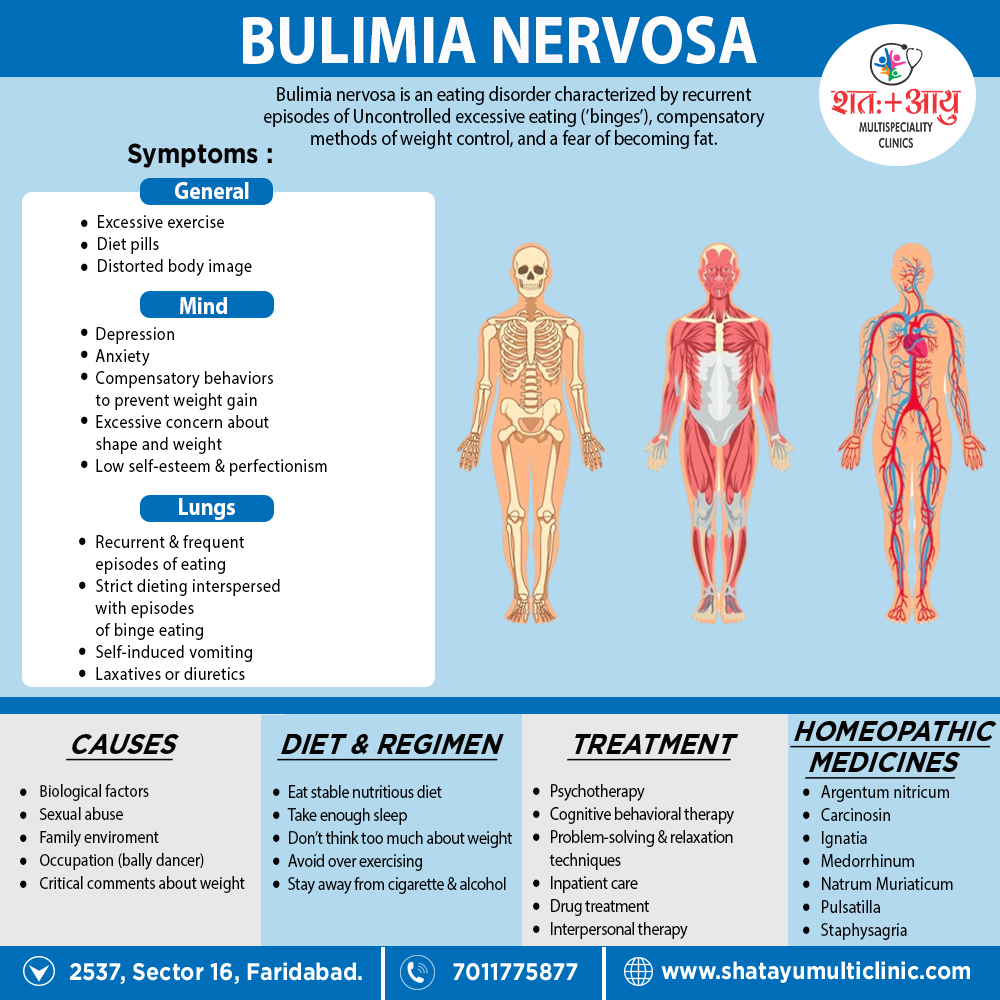Homeopathic Treatment of Bulimia Nervosa
Argentum nit:
Binging especially with chocolate, fixed ideas, impulsive behaviour, anticipation, overriding impulses for certain foods, chocolate, salty foods, they will eat a whole box of chocolates until they get sick.
Carcinosin:
Obsessive compulsive disorder. Moreover, Perfectionism, fear of becoming fat, fear of rejection. Etiology-abuse, grief or fears, often related to weight.
Ignatia:
Perfectionism, fear of becoming fat, fear of rejection. Hysteria-loss of control of emotions, fainting. Besides this, Etiology-grief or big disappointment, often related to weight.
Medorrhinum:
Ups and down in the person’s energy, very outgoing for 2 or 3 days than wiped out for several days and with that their diets fluctuate from good to binging. Bulimia also with alcohol and drugs.
Natrum mur:
Often indicated remedy in anorexia, a lot of guilt. Furthermore, Fear of being rejected, hurt easily. Very self-conscious of their weight.
Pulsatilla:
Fear of being abandoned also unloved. Fixed ideas about food, their weight, they gain and lose weight easily, eat also indulging to console themselves, binges out of loneliness, or depression, then they get guilt and fear about it and then suppress it.
Staphysagria:
indulging out of guilt, depression. Additionally, Poor self-confidence and worthlessness. It is out of self-denial, they do not deserve that -lemon meringue pie so they suppress their desire for it, and then indulging on it. [3]

